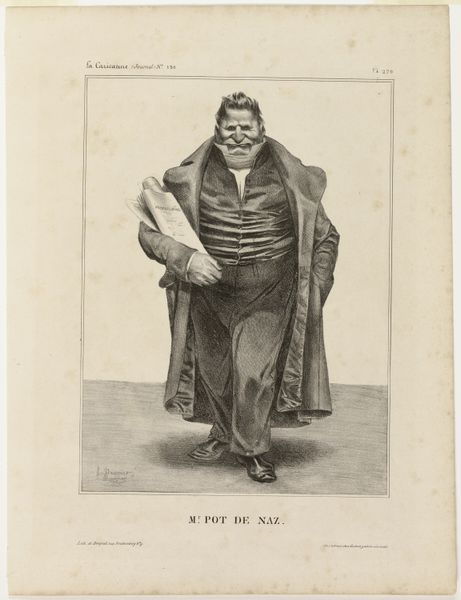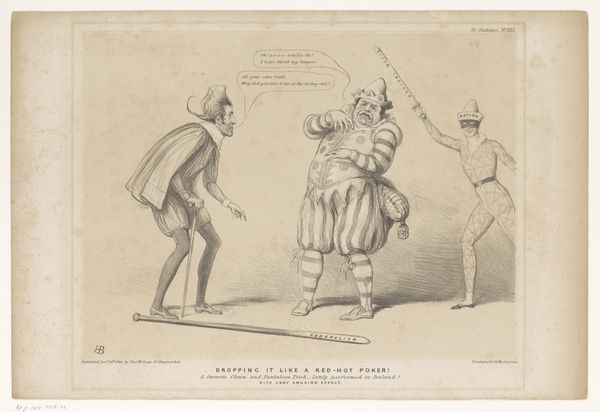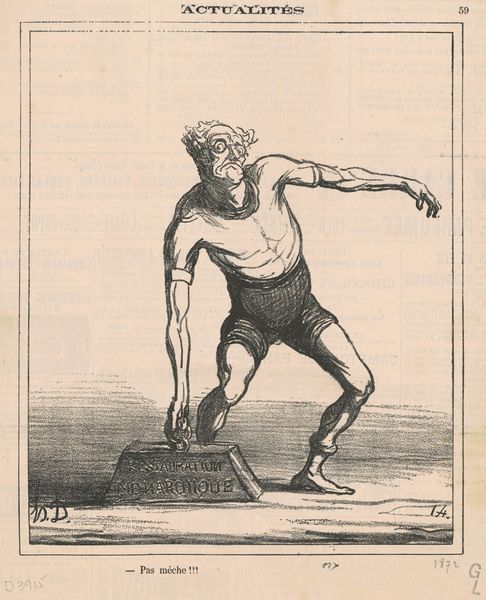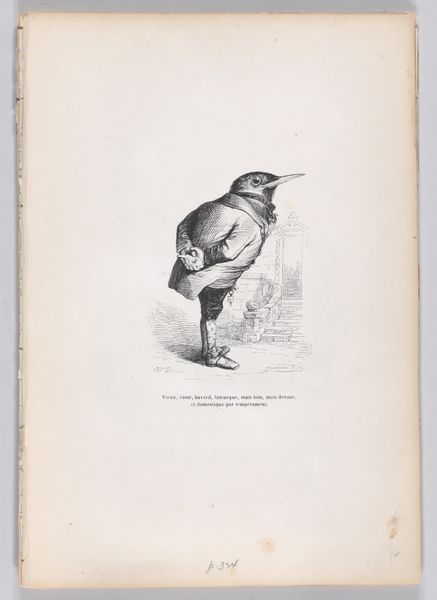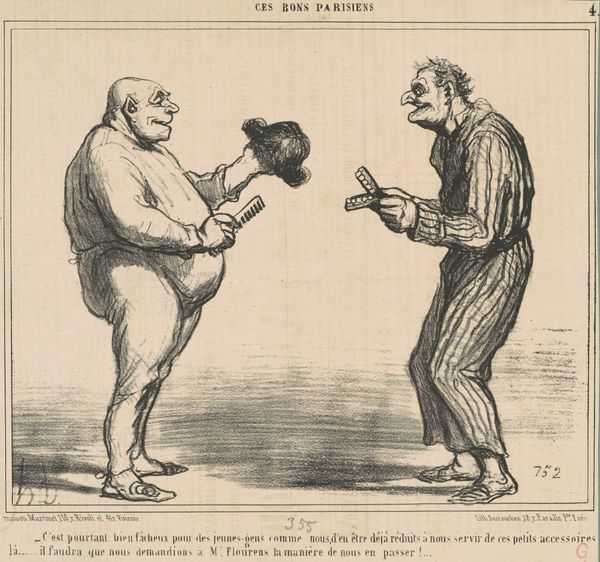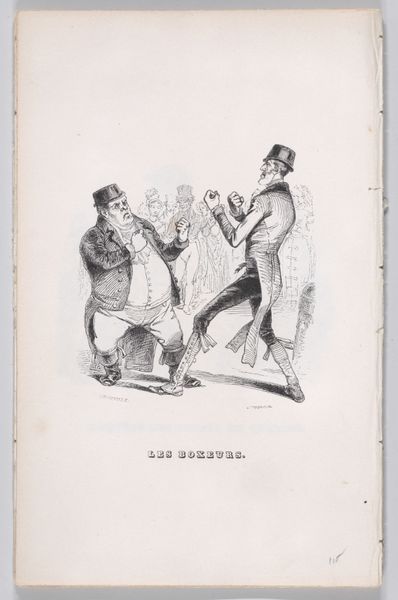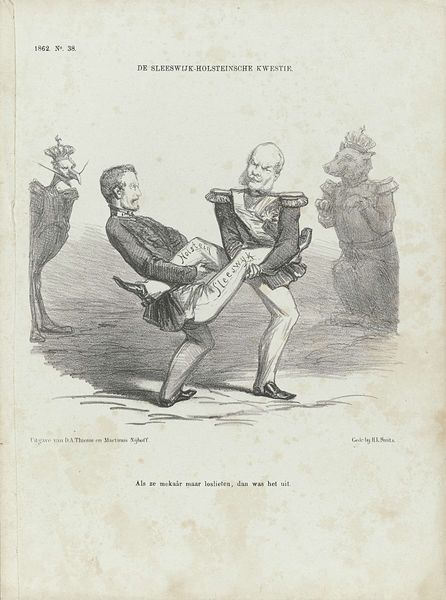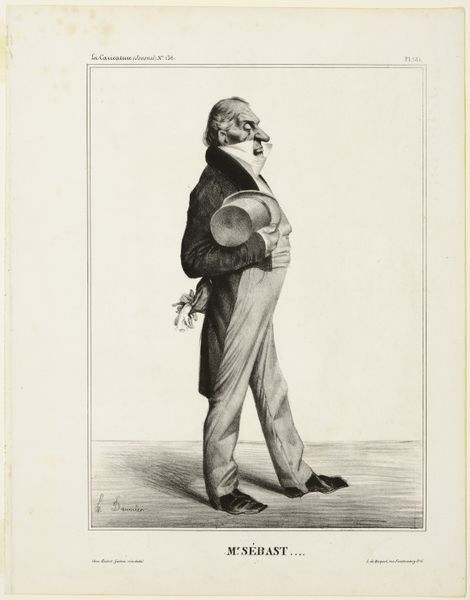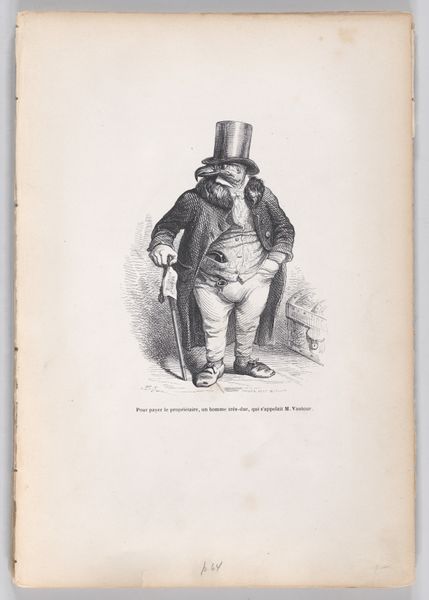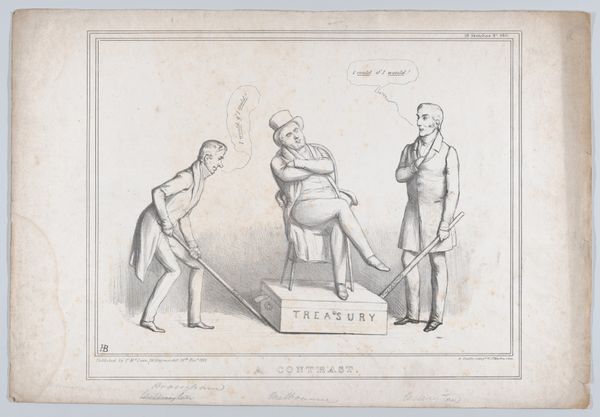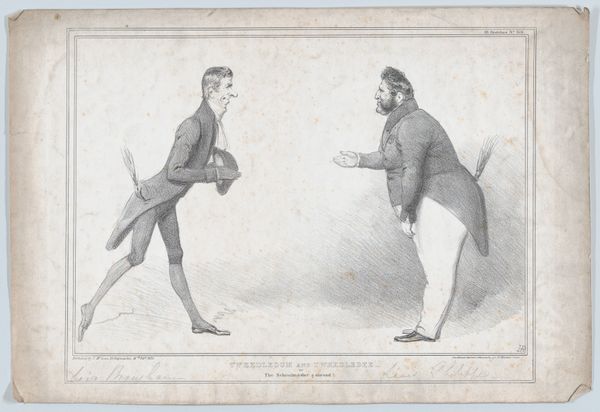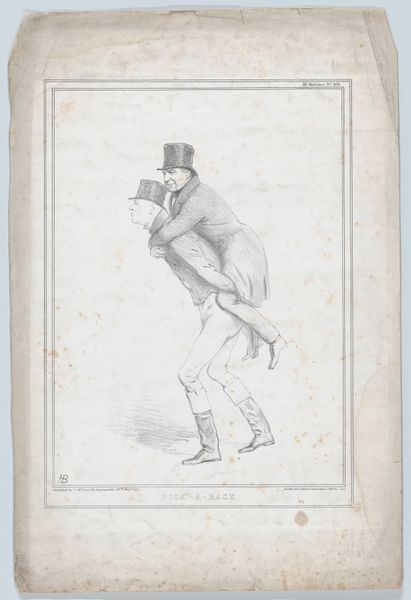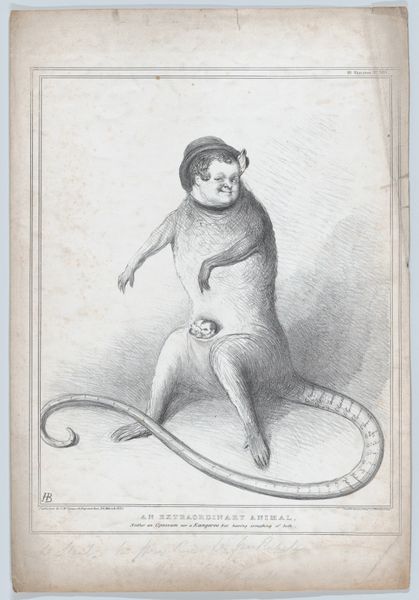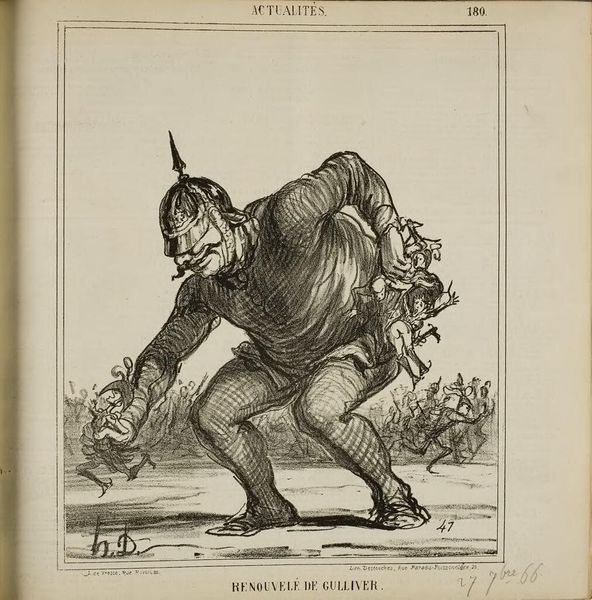
drawing, print
#
portrait
#
drawing
# print
#
caricature
#
historical fashion
#
men
#
history-painting
Dimensions: Sheet: 17 5/16 × 11 11/16 in. (44 × 29.7 cm)
Copyright: Public Domain
Editor: This drawing, titled "Diogenes in Search of an Honest Man," created by John Doyle between 1835 and 1837, uses ink on paper to achieve its message. There's a sort of humorous yet biting commentary in this caricature. What stands out to you about the cultural significance of this piece? Curator: Well, consider the context: 1830s London, a period of intense political reform and social commentary. Doyle, under the pseudonym H.B., produced lithographs lampooning political figures. The subject resembling William IV could reference dissatisfaction with the monarchy or broader anxieties about leadership and integrity. This was originally mass produced; lithographs allowed for wide circulation of such pointed opinions, contributing to public discourse. Editor: So, the piece acts as both art and a form of early political cartoon, shaping public perception at the time? It is very cheeky! Curator: Precisely! Its power resides not just in its aesthetic qualities, but in its ability to engage in a broader cultural dialogue. We should ask: who had access to these prints? How might their social standing have influenced their interpretation? What does that lamp held to guide his path mean within the broader sphere of imagery that would then lead to cartooning? Editor: Thinking about it that way, it's almost a proto-meme, spreading an idea quickly through a visual medium. I see it, that actually makes this quite the subversive piece. Thanks! Curator: Indeed! And that's the beauty of viewing art through a historical lens – it reveals the complex ways in which art and society are intertwined.
Comments
No comments
Be the first to comment and join the conversation on the ultimate creative platform.
